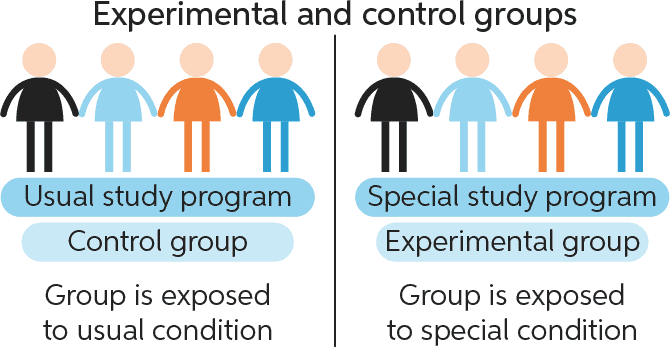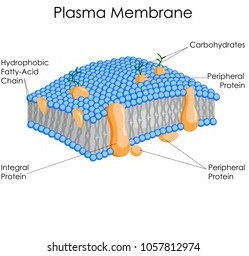A nurse is caring for a patient who has suffered a traumatic brain injury after falling from a height. The nurse knows that the severity of the injury depends on the speed at which the patient hit the ground. Which of the following factors affects the terminal velocity of a falling object?
A. The shape and surface area of the object.
B. The mass and volume of the object.
C. The acceleration and momentum of the object.
D. The height and distance of the fall.
The correct answer is choice A.
The shape and surface area of the object.
The terminal velocity of an object falling through a fluid is affected by several factors, including its mass and shape.

Objects with large surface areas will often experience a large amount of air resistance when they move.
Choice B is incorrect because the volume of the object does not affect its terminal velocity.
Choice C is incorrect because the acceleration and momentum of the object do not affect its terminal velocity.
Choice D is incorrect because the height and distance of the fall do not affect the terminal velocity of a falling object.
Therefore, the Correct Answer is A.
More Questions on TEAS 7 Science
-
Q #1: What is hydrogen bonding?
A. The attraction between the relatively positive areas of one molecule and the relatively negative areas of another molecule.
B. The repulsion between the positive and negative charges of two molecules.
C. The attraction between two nonpolar molecules.
D. The attraction between two ionic molecules.
Answer Explanation
Hydrogen bonding is an interaction involving a hydrogen atom located between a pair of other atoms having a high affinity for electrons.

One atom of the pair (the donor), generally a fluorine, nitrogen, or oxygen atom, is covalently bonded to a hydrogen atom, whose electrons it shares unequally; its high electron affinity causes the hydrogen to take on a slight positive charge.
The other atom of the pair (the acceptor), also typically F, N, or O, has an unshared electron pair, which gives it a slight negative charge.
Mainly through electrostatic attraction, the donor atom effectively shares its hydrogen with the acceptor atom, forming a bond.
Choice B) The repulsion between the positive and negative charges of two molecules is incorrect because hydrogen bonding involves attraction, not repulsion.
Choice C) The attraction between two nonpolar molecules is incorrect because hydrogen bonding involves polar molecules.
Choice D) The attraction between two ionic molecules is incorrect because hydrogen bonding involves polar molecules and not ionic molecules.
-
Q #2: In a well-designed experiment, all variables apart from the treatment should be kept constant between what?.
A. Control group and treatment group.
B. Independent variable and dependent variable.
C. Experimental group and non-experimental group.
D. High level and low level of the independent variable.
Answer Explanation
In a well-designed experiment, all variables apart from the treatment should be kept constant between the control group and treatment group.
This means researchers can correctly measure the entire effect of the treatment without interference from confounding variables.

Choice B) Independent variable and dependent variable is incorrect because these are not groups but rather variables.
The independent variable is manipulated by the experimenters while the dependent variable is measured to see if it changes as a result of the manipulation.
Choice C) Experimental group and non-experimental group is incorrect because a non-experimental group is not a term used in experimental design.
The correct term for the group that does not receive the treatment is control group.
Choice D) High level and low level of the independent variable is incorrect because these are levels of the independent variable, not groups.
In an experiment, there can be multiple levels of the independent variable, but they are applied to different groups (e.g.
control group, treatment group).
-
Q #3: Which hormone is responsible for the development of female secondary sexual characteristics such as breast development, menstrual cycle, and widening of hips?
A. Progesterone
B. Testosterone
C. Estrogen
D. FSH
Answer Explanation
The correct answer is choice C. Estrogen.
Estrogen is a steroid hormone responsible for the development of female secondary sexual characteristics such as breast development, menstrual cycle, and widening of hips.
Choice A, Progesterone, is not the correct answer because it is required to maintain pregnancy and delivery.
Choice B, Testosterone, is not the correct answer because it is a hormone produced by the testes which controls the development of male secondary sexual characteristics.
Choice D, FSH (Follicle Stimulating Hormone), is not the correct answer because it stimulates the growth of ovarian follicles in females and regulates spermatogenesis in males.
-
Q #4: Which of the following statements about bacteria and archaea is true?
A. A. Bacteria have a true nucleus while archaea do not
B. B. Archaea reproduce by spores while some bacteria reproduce by fission.
C. C. Bacteria can perform photosynthesis while archaea cannot.
D. D. Archaeal and bacterial flagella are constructed similarly.
Answer Explanation
Bacteria can perform photosynthesis while archaea cannot. Many types of bacteria can generate oxygen from sunlight through photosynthesis, while archaea cannot perform this process.
Choice A is incorrect because neither bacteria nor archaea have a true nucleus. Both are prokaryotic organisms. Choice B is incorrect because archaea reproduce by fission, fragmentation, or budding, while bacteria can produce spores and divide sexually or asexually. Choice D is incorrect because archaeal and bacterial flagella are constructed differently.
-
Q #5: What is the function of inflammatory cytokines released during the early response to bacterial infection?
A. Enhancing the phagocytosis of pathogens and disrupting the infection
B. Attacking invading pathogens
C. Initiating cell recruitment and local inflammation
D. Secreting antibodies to neutralize pathogens .
Answer Explanation
Inflammatory cytokines released during the early response to bacterial infection play a crucial role in initiating cell recruitment and local inflammation 1.
They induce the expression of adhesion molecules in endothelial cells and promote the recruitment of neutrophils to the site of inflammation 1.

Choice A is incorrect because while inflammatory cytokines may enhance phagocytosis, they do not directly disrupt the infection.
Choice B is incorrect because inflammatory cytokines do not directly attack invading pathogens.
Choice D is incorrect because inflammatory cytokines do not secrete antibodies to neutralize pathogens.
-
Q #6: Which subatomic particle contributes to the positive charge of an atom?
A. Proton
B. Neutron
C. Electron
D. Nucleon
Answer Explanation
Protons contribute to the positive charge of an atom.
Protons are subatomic particles with a positive charge found in the nucleus of an atom.

Choice B is incorrect because neutrons are neutral and do not have a charge. Choice C is incorrect because electrons have a negative charge.
Choice D is incorrect because nucleons refer to both protons and neutrons, but only protons contribute to the positive charge of an atom.
-
Q #7: What is the organelle that encapsulates the contents of the cell and plays a vital role in regulating the movement of substances in and out of the cell?.
A. Ribosome
B. Nucleus
C. Mitochondria
D. Plasma membrane.
Answer Explanation
The plasma membrane is the organelle that encapsulates the contents of the cell and plays a vital role in regulating the movement of substances in and out of the cell.
It is a selectively permeable barrier that separates the internal environment of the cell from the external environment.

Choice A is incorrect because ribosomes are organelles involved in protein synthesis, not in regulating the movement of substances in and out of the cell.
Choice B is incorrect because the nucleus is an organelle that contains the cell’s genetic material, not in regulating the movement of substances in and out of the cell.
Choice C is incorrect because mitochondria are organelles involved in energy production, not in regulating the movement of substances in and out of the cell.
-
Q #8: In which type of tissue would you find a fibrous protein that provides strength and protection to the body, particularly in the skin, hair, and nails?
A. Keratin
B. Collagen
C. Elastin
D. Actin
Answer Explanation
The correct answer is choice A. Keratin.
Keratin is a fibrous protein that provides strength and protection to the body, particularly in the skin, hair, and nails.

It is found in epithelial tissue, which covers the body’s surface and lines its internal organs and cavities.
Choice B.
Collagen is incorrect because collagen is a fibrous protein that provides strength and support to connective tissues such as tendons, ligaments, and cartilage.
Choice C.
Elastin is incorrect because elastin is a protein that provides elasticity to tissues such as skin and blood vessels.
Choice D.
Actin is incorrect because actin is a protein that plays a role in muscle contraction and cell movement.
-
Q #9: What is the hallmark of adaptive immunity?
A. Rapid recruitment of immune cells to sites of infection and inflammation
B. Antigen-independent defense mechanism
C. Immunologic memory
D. Non-specific host-defense mechanisms .
Answer Explanation
Immunologic memory is the hallmark of adaptive immunity.
Immunologic memory enables the host to mount a more rapid and efficient immune response upon subsequent exposure to the antigen.
Choice A is incorrect because rapid recruitment of immune cells to sites of infection and inflammation is a characteristic of innate immunity.
Choice B is incorrect because antigen-independent defense mechanisms are characteristic of innate immunity.
Choice D is incorrect because non-specific host-defense mechanisms are characteristic of innate immunity.
-
Q #10: Which of the following organelles is responsible for modifying, sorting and packaging proteins and lipids?
A. Golgi apparatus
B. Mitochondria
C. Ribosomes
D. Endoplasmic reticulum
Answer Explanation
The correct answer is choice A. Golgi apparatus.
The Golgi apparatus is a membrane-bound organelle that is responsible for transporting, modifying, and packaging proteins and lipids into vesicles for delivery to targeted destinations.
Choice B is incorrect because mitochondria are responsible for energy production.
Choice C is incorrect because ribosomes are responsible for protein production.
Choice D is incorrect because the endoplasmic reticulum is responsible for lipid production and protein production, but not for modifying, sorting and packaging proteins and lipids.
Free Access on TEAS 7 Exams and Study Notes
- Access to all TEAS 7 Exams
- Performance Tracking and Analysis
- Well Documented and Explained Questions and Answers
- 2000+ Questions and Correct Answers: Answers Well Explained
- Libary of Detailed StudyNotes
- Topical Questions and Answers on Examinable topics
TEAS 7 Exams (Q&A)
TEAS 7 Study Notes
TEAS 7 Topical Tests

TEAS 7 Study Guides
Quick Links
Refer a Friend
Refer a friend and claim free unlimited access

© 2024 ExamGates Made with by ExamGates
